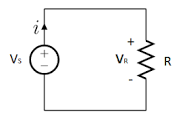Ohm’s Law, named after the German physicist Georg Simon Ohm, states the relationship between current, voltage, and resistance in an electrical circuit i.e. Ohm Law Diagram. It is a fundamental principle in electrical engineering and is expressed by the equation:
V = I * R
where:
- V represents voltage, measured in volts (V),
- I represents current, measured in amperes (A), and
- R represents resistance, measured in ohms (Ω).

According to Ohm’s Law, the voltage across a conductor is directly proportional to the current flowing through it, and inversely proportional to the resistance of the conductor. This relationship holds true for many conductive materials and simple DC (direct current) circuits.
The equation can be rearranged to solve for any of the three variables, depending on what information is known:
I = V / R (to calculate current) V = I * R (to calculate voltage) R = V / I (to calculate resistance)
Ohm’s Law is essential for understanding and analyzing electrical circuits. It helps in determining the relationship between voltage, current, and resistance, and enables engineers and technicians to calculate and predict circuit behavior. It is widely used in various applications, including circuit design, troubleshooting, and electrical measurements.
Ohm's Law Calculator
